In this blog, RM Prasad presents the case for responsible innovation in the context of smart innovations in agriculture, and highlights the need for organizing studies on responsible innovation employing the available frameworks and methodologies for effective policy planning and implementation.
CONTEXT
Every innovation needs to be analyzed in terms of its contribution as well as consequences on society. It should provide equitable access to products and services and shouldn’t exclude anyone from the development mainstream. In other words, innovations have to be inclusive, by taking into account social and ethical aspects and balancing economic, socio-cultural and environmental aspects. Thus, an innovation can be considered as responsible only if risks, potential harms, well-being, values, needs, rights and interests of relevant parties affected by the innovation are adequately taken into consideration at a very early stage itself.
RESPONSIBLE INNOVATION
Responsible Innovation (RI) refers to a process of innovation that meets certain procedural norms such as accountability, inclusiveness, due care and transparency to stakeholders and to all of society. This implies a responsible approach towards innovation which involves creating change that can have positive impacts on society and the environment. There is a need to recognize the role of the rural poor as co-learners and as repositories of much useful knowledge instead of looking at them as just beneficiaries or users of innovation (Raina and Das, 2020).
RI has become a prominent topic when thinking of ethical and social aspects of innovation and new technology in the last few years. But it goes beyond consideration of ethics, public engagement, risk and regulation. The public expects researchers to act responsibly, and RI creates spaces and processes to explore innovation and its consequences in an open, inclusive and timely way. It brings together researchers from different fields of study including technology assessment, science communication, and ethics of technology. Responsible innovation encourages us to think of what technologies are for, who they are serving, and who is driving the process (Crossley 2018).
RESPONSIBLE INNOVATION IN AGRICULTURE
Responsible Research and Innovation (RRI) is an emerging field in the European research and innovation (R&I) policy context that aims to balance economic, socio-cultural and environmental aspects in innovation processes. The concept of RRI calls for ethical reflection on the nature, scope, and applicability of responsibility in innovation and innovation practices in general, and the way social and ethical issues can be applied and addressed in agriculture. Incremental innovation has always been at the centre of agriculture for many years. Incremental innovation does not create new concepts or products, as it focuses only on marginal improvements to what already exists. However, in the last few decades, agricultural research has led to many radical innovations in agriculture such as hybrid seeds, genetically modified crops, nano products, etc. These radical innovations have led to much criticism from a section of society, particularly environmental groups and animal rights activists. Though agricultural production today faces several challenges including climate change and market, there is a common understanding that environmental and animal welfare need to be protected. Farmers are urged to reorganize their practices in a responsible way under various labels such as Good Agricultural Practices (GAP), ‘organic’, safe to eat, healthy food, etc.
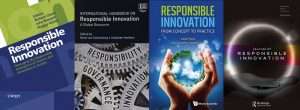 In agriculture, the concept of RI has not been widely considered, although it has much relevance, particularly with smart farming emerging as the latest innovation in agriculture. The specifics of the smart farming revolution create challenges for responsible innovation frameworks that have largely been developed in other fields, and have not been tested/put into practice in the agricultural context.
In agriculture, the concept of RI has not been widely considered, although it has much relevance, particularly with smart farming emerging as the latest innovation in agriculture. The specifics of the smart farming revolution create challenges for responsible innovation frameworks that have largely been developed in other fields, and have not been tested/put into practice in the agricultural context.
TECHNOLOGICAL CHALLENGES IN AGRICULTURE
Technology is a double-edged sword because it has the potential to cause harm, as well as provide benefits. In agriculture, several controversies exist over the use of chemical pesticides as well as intense debates over genetic modification in crops. In the case of smart farming, Wolfert et al. (2017) indicated that the emphasis on big data could further move decision making power from farmers into the hands of private companies who have control over such data. Carbonell (2016) also highlighted the ethics of big data in agriculture, focusing on the power asymmetry between farmers and large agribusiness giants such as Monsanto.
The smart farming approach implies that farm management tasks and upstream interactions in the supply chain are informed by collected data, enhanced by context and situation awareness, and triggered by real-time events. Both scientists and policy makers are increasingly looking to smart farming as a technological solution to address societal concerns around farming, including traceability, animal welfare in livestock industry and environmental impact of different farming practices. Although most literature on smart farming focuses on the potential for improving agricultural practices and productivity, it is also argued that smart farming will reshape the practice of farming, with less of ‘hands-on’ management and a more data-driven approach. This poses a big challenge given the ecology of innovations in agriculture. An ecology of innovations includes ‘big’ emerging smart technologies (e.g., artificial intelligence, internet of things, cloud computing, robotics, etc.) as well as ‘small’ farmer and/or community led innovations for low tech sustainable agricultural solutions, referred to as Grassroots Innovations (GRI). Links to several publications related to Responsible Innovation are given in Box 1.
| Box 1: Sources for further information RESEARCH PAPERS Biddle JB. 2017. Genetically engineered crops and responsible innovation. Journal of Responsible Innovation. 4(1):24-42. https://www.tandfonline.com/doi/full/10.1080/23299460.2017.1287522Bronson K. 2019. Looking through a responsible innovation lens at uneven engagements with digital farming. NJAS-Wageningen Journal of Life Sciences. 90, 100294. https://www.sciencedirect.com/science/article/pii/S1573521418302173 Gremmen B, Blok V and Bovenkerk B. 2019. Responsible innovation for life: five challenges agriculture offers for responsible innovation in agriculture and food, and the necessity of an ethics of innovation. Journal of Agricultural and Environmental Ethics. 32(5), 673-679. https://link.springer.com/article/10.1007/s10806-019-09808-w Long TB, Blok V, Dorrestijn S and Macnaghten P. 2020. The design and testing of a tool for developing responsible innovation in start-up enterprises. Journal of Responsible Innovation. 7(1):45-75. https://www.tandfonline.com/doi/full/10.1080/23299460.2019.1608785 Macnaghten P. 2019. Responsible innovation and agricultural sustainability: lessons from genetically modified crops. In International Handbook on Responsible Innovation. Edward Elgar Publishing. https://www.elgaronline.com/view/edcoll/9781784718855/9781784718855.00028.xml Pant LP. 2019. Responsible innovation through conscious contestation at the interface of agricultural science, policy, and civil society. Agriculture and human values. 36(2):183-197. https://link.springer.com/article/10.1007/s10460-019-09909-2 Pavie X. 2014. The importance of responsible innovation and the necessity of ‘innovation-care’. Philosophy of Management. 13(1):21-42. https://link.springer.com/article/10.5840/pom20141313 Regan Á. 2021. Exploring the readiness of publicly funded researchers to practice responsible research and innovation in digital agriculture. Journal of Responsible Innovation. 1:1-20. https://www.tandfonline.com/doi/full/10.1080/23299460.2021.1904755 Rose DC and Chilvers J. 2018. Agriculture 4.0: Broadening responsible innovation in an era of smart farming. Frontiers in Sustainable Food Systems. 2:87. https://www.frontiersin.org/articles/10.3389/fsufs.2018.00087/full?utm_source=fweb&utm_medium=nblog&utm_campaign=ba-sci-fsufs-responsible-agriculture Stilgoe J, Owen R and Macnaghten P. 2013. Developing a framework for responsible innovation. Research policy. 42(9):1568-1580. https://www.sciencedirect.com/science/article/pii/S0048733313000930 Van der Burg S, Bogaardt MJ and Wolfert S. 2019. Ethics of smart farming: Current questions and directions for responsible innovation towards the future. NJAS-Wageningen Journal of Life Sciences. 90, 100289. https://www.sciencedirect.com/science/article/pii/S1573521418301490 Valkenburg G, Mamidipudi A, Pandey P and Bijker WE. 2020. Responsible innovation as empowering ways of knowing. Journal of Responsible Innovation. 7(1):6-25. https://www.tandfonline.com/doi/full/10.1080/23299460.2019.1647087 BOOKS Owen R, Bessant JR and Heintz M. (Eds) 2013. Responsible innovation: managing the responsible emergence of science and innovation in society. John Wiley & Sons. https://onlinelibrary.wiley.com/doi/book/10.1002/9781118551424 Pavie X, Carthy D and Scholten V. 2014. Responsible innovation: From concept to practice. World Scientific.. https://www.worldscientific.com/worldscibooks/10.1142/8903 Von Schomberg R and Hankins J. (Eds) 2019. International handbook on responsible innovation: A global resource. Edward Elgar Publishing. https://www.elgaronline.com/view/edcoll/9781784718855/9781784718855.xml Yaghmaei E and Poel IV. 2021. Assessment of Responsible Innovation: Methods and Practices. Taylor & Francis. https://www.taylorfrancis.com/books/oa-edit/10.4324/9780429298998/assessment-responsible-innovation-emad-yaghmaei-ibo-van-de-poel COURSE Building Capacity for Responsible Innovation: Agri-Technology. Centre for Entrepreneurial Agri-Technology. The Australian National University, Canberra ACT 2600. https://ceat.org.au/building-capacity-for-responsible-innovation-agri-technoloegy/ TOOL KIT RRI Toolkit. The project has received funding from the European Union’s Seventh Framework Programme for research, technological development and demonstration under grant agreement no. 612393. https://rri-tools.eu/about-rri |
APPLICATION OF RI IN AGRICULTURE
In agriculture, the concept of responsible innovation has not been used to the desired extent, although two recent reports (Eastwood et al. [2017] on RI in smart dairying and Bronson [2018] on smart farming) are found to be useful and relevant, which are briefly explained in this blog. The widespread use of smart dairy farming technologies, including robotic milking was found to bring about varied outcomes for animals, people and the environment. Eastwood et al. conducted the study using the anticipation-inclusion-reflexivity-responsiveness (AIRR) framework, identified as the key dimensions of responsible innovation.
Anticipation: To enhance anticipation in science and innovation governance, actors (scientists, practitioners, technology developers, policy makers) shall use processes to identify and minimize unintended consequences of future innovations. Potential indicators of anticipatory processes include the use of foresight exercises, horizon scanning, and scenario-building techniques.
Inclusion: This relates to broadening the debates around innovation from top-down governance mechanisms to bottom-up approach and the inclusion of all the stakeholders. The inclusion of stakeholder perspectives in technology development is suggested as a method for improving stakeholders’ trust in the innovation process. Techniques to facilitate inclusion include citizen panels, focus groups, and user-centred design.
Reflexivity: Being more reflexive involves researchers assessing their own motivations and assumptions (e.g., social, ethical, and political norms and values) and acknowledging the perspectives of other actors (e.g., the public, companies, etc.) on particular issues. Certification and standardisation and codes of conduct have been identified as ways for public and private institutions to communicate their norms.
Responsiveness: Responding to societal needs entails an ability to change direction in the innovation process in light of emerging knowledge and perspectives. Since societal challenges, perspectives, and norms are likely to change over time, responsible innovation also calls for the capacity to change direction. Open access to research processes and results, along with declarations of conflicts of interest, are potential responsive approaches.
The study identified changes to the nature of farming and human-animal relations as socio-ethical dilemmas, potentially leading to farmers and society rejecting smart farming technology-based applications. By applying the AIRR framework to a case study of smart dairying in New Zealand, Eastwood et al. also identified lessons for the application of smart farming technologies to farmers in the future. Proposed indicators of responsible innovation activities in smart dairying as discussed by Eastwood et al. (2017) are given in Table 1.
Table 1: Indicators of responsible innovation in smart dairying
| Indicator | Description | Potential Activities |
| Anticipation 1. Foresight exercises |
Future scanning activities | Technology use surveys, Assessing farmer perception of technologies |
| 2. Scenario building of smart dairy farms | Imagine potential and negative futures | Visioning of smart dairy farms |
| Inclusion 3. Involvement of relevant actors |
A range of end-users and citizens are involved | Seeking critical feedback |
| 4. Private sector engagement | Private companies are included as partners in publicly funded research | Private companies co-fund research projects |
| 5.Encouraging transformative mutual learning | Mutual learning | User-centred design; Open innovation |
| Reflexivity
6. Reflexive guidance |
Reflection on values around development and use of technology | Reflective monitoring |
| 7. Structures guide second order reflexivity | Use of codes of conduct and standards | Creation of best practices guidelines |
| Responsiveness 8. Potential to adapt changes |
Change direction based on stakeholder feedback | Mid-project revisions; Milestones |
| 9. Open research process and access to research data | Transparent smart farming design | Open data exchange, open access to data points |
Similarly, Bronson (2018) studied smart farming innovation in Canada and portrayed the scenario of John Deere fitting each of its ‘precision’ tractors with sensors that collect data about soil and crop condition. The software used in John Deere’s tractor is proprietary and the data it collects are not openly accessible. Farmers have to subscribe and pay for access to the information it generates from aggregated datasets, which is accessible using a ‘My Farm Manager’ mobile application. The proponents of precision tractors suggest that the tools introduce incredible business efficiency into farming.
It was observed that corporates recognize the economic potential in smart innovations applied to agricultural production. In 2013, Monsanto after purchasing the digital tool developer ‘Climate Corporation’, under a platform called Integrated Field Systems (IFS) released in 2014, offers farmers a suite of digital tools for collecting and analysing farm data. Monsanto uses farm-led data to promote its proprietary chemicals and farmers’ data to drive its R&D. Here, whether the individual farmer benefits commensurately with the corporate party is an ethical question.
Bronson indicated that smart farming innovation in Canada has a blind spot in relation to the needs and concerns of small and medium sized labour intense farms. Smart innovations work to the advantage of already powerful players in the food system in Canada, which is a market reality, but it is simultaneously a democratic problem. Technological equity and broad social progress has to be secured through careful and ethical decisions taken by key players in the innovation ecosystem. The inclusion of right holders in broad, value-based inquiries related to technology development is suggested as a solution for improving outcomes and also for improving trust in the innovation process.
There is an indication that innovation in big data and machine intelligence may enable by their very design, consolidation of power among the agribusiness companies. For instance, Monsanto’s Field Support, a platform for integrating farm level big data, makes use of a proprietary algorithm to arrive at a ‘prescription’, which is completely opaque, protected as corporate intellectual property, and there is lack of transparency around the profit generating uses of Field Support big data.
Though corporates have a legal mandate to maximize profit, the government has a democratic mandate to ensure that the technologies it helps to develop contribute to the goal of society as a whole and not just to the interests of the already rich and powerful classes. Value-based questioning ought to be foregrounded, as a normative matter, in the inclusive process of decision making related to smart agriculture.
In their study, Eastwood et al. (2021) reported that the digital revolution has differing potential trajectories for livestock sectors. Benefits of more data and better technologies include more accurate and proactive decision making, and productive and enjoyable workplaces. However, risks involve greater consumer and public perceptions of industrialized farming, disconnection with traditional animal husbandry and the meaning of being a farmer, and commodification of farm data. Possible trajectories identified are technology-driven livestock systems, technology-enabling amended versions of current systems, and technology-augmented livestock systems that address future needs.
One recent process used to conceptualize technology transitions, and explore potential future trajectories, is the ‘Futures Triangle’, which examines both the drivers of, and constraints to, change (Fergnani 2020).
The three aspects to the triangle are: ‘weight of the past’, ‘pull of the future’, and ‘push of the present’.
Weight: The first aspect (weight) relates to examining traditional resistance to technological change, the potential obstacles/barriers, and social or innovation system structures that resist change (e.g., regulation or national policies).
Pull: The second aspect (pull) involves imagining future possibilities, innovations, or aspirations that may not yet be a reality. In this aspect of the triangle, the drivers of change and differing images of the future are examined.
Push: The third aspect (push) is concentrated on the current reality and examines what is happening, and what the current drivers of change are (e.g., demographic change and societal expectations).
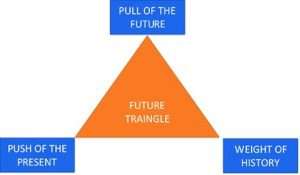 Source: https://miro.medium.com/max/1400/1*pbGJ8iBZa2h4YnsIoPX11w.png (with slight modification)
Source: https://miro.medium.com/max/1400/1*pbGJ8iBZa2h4YnsIoPX11w.png (with slight modification)
The findings of the study by Zhang et al. (2021) highlight that, to seize the opportunities of sustainable agriculture through applying big data technologies, significant value propositions for farmers need to be created so as to provide a reason for farmers to share data; and a higher level of trust between farmers and stakeholders, especially technology and service providers, needs to be established.
WAY FORWARD
It is said that smart farming in India is going to be the future of agriculture. With smart devices, multiple processes can be activated at the same instant and automated services enhance product quality and volume. NITI Aayog and other policy bodies in India are pushing this innovation in a big way. However, there are many challenges and issues which need to be addressed. How far the small and marginal farmers can access and utilize the smart farming innovations is a big question. Another important challenge lies in transforming the smart standalone devices and gateways into holistic, farmer-friendly platforms.
Both the digital and physical infrastructure need to work together, but small farmers in villages and cities face difficulty in pairing the two. It is expected that Agri start-ups can reach out to all these farmers and make it a viable and cost-effective solution. In light of controversial agri-tech precedents such as GM crops, it is probable that smart farming will also result in a similar controversy. The digital divide existing in the country is also likely to be widened.
Normally, extension scientists are involved in studying the extent of adoption of innovations and the associated factors (ex-post). They have also a definite role in reviewing and analysing the proposed innovations (ex-ante), and critiquing innovations in terms of equity and its impact on the environment in relation to sustainability. In agriculture, unfortunately, extension scientists are not serious about ex-ante studies and evaluations, which therefore, needs to be strengthened.
Against this background, it is felt that extension scientists need to take an important role in identifying the real issues and concerns of various stakeholders in emerging innovations by conducting responsible innovation studies using the available frameworks and methodologies to provide useful insights and valid suggestions to policy makers. I strongly urge our young and competent extension researchers to get involved in policy studies related to digital innovations in agriculture. How the AIRR framework of Responsible Innovation can be applied in implementing the IDEA (Indian Digital Ecosystem of Agriculture) of the Ministry of Agriculture, GoI, can be a good case for analysis.
REFERENCES
Bronson K. 2018. Smart farming: including rights holders for responsible agricultural innovation. Tech Innov. Manage. Rev 8(2):7-14. doi:10.22215/timreview/1135
Carbonell I. 2016. The ethics of big data in big agriculture. Int.Policy Rev 5(1):1-13.
Crossley D. 2018. Big questions and radical change. Available online at: https://www.foodethicscouncil.org/uploads/For%20whom%20-%20questioning%20the%20food%20and%20farming%20research%20agenda_FINAL_1.pdf
Eastwood C, Klerkx l, Ayre M and Dela Rue B. 2017. Managing socio-cultural challenges in the development of smart farming: From a fragmented to a comprehensive approach for responsible research and innovation. J. Agric. Environ. Ethics 32:741-768.
Eastwood CR, Edwards JP and Turner JA. 2021. Review: Anticipatory alternative trajectories for Responsible Agriculture 4.0 innovation in livestock systems. Animal https://doi.org/10.1016/j.animal 2021.100296.
Fergnani A. 2020. Futures Triangle 2.0: Integrating the Futures Triangle with Scenario Planning. Foresight 22(2):178-188. https://doi.org/10.1108/FS-10-2019-0092
Government of India. 2021. Consultation Paper on IDEA (Indian Digital Ecosystem of Agriculture). New Delhi: Department of Agriculture, Cooperation and Farmer Welfare, GOI. 1 June, 2021.
Rose David C and Chilvers J. 2018. Agriculture 4.0: Broadening Responsible Innovation in an era of smart farming. Perspective Article. Frontiers in Sustainable Food Systems, Dec 2018. https://doi.org/10.3389/fsufs.2018.00087
Rajeswari S Raina and Keshab Das (Eds) 2020. Inclusive innovation: Evidence and options in rural India. Springer.
Wolfert S, Ge L, Verdouw C and Bogaardt MJ. 2017. Big data in smart farming – A review. Agricu. Syste 153:69-80.
Zhang Airong et al. 2021. Who will benefit from big data? Farmers’ perspective on willingness to share farm data. Journal of Rural Studies, August 2021. https://doi.org/10.1016/j.jrurstud.2021.08.006
 Dr R M Prasad is a retired Faculty from Kerala Agricultural University, who had served in KHDP and KMIP (EU funded projects in Kerala), NIRD, Hyderabad and Government of Meghalaya. Presently, he is the Vice President of Farm Care Foundation, Thrissur, Kerala (email: drrmprasad@gmail.com)
Dr R M Prasad is a retired Faculty from Kerala Agricultural University, who had served in KHDP and KMIP (EU funded projects in Kerala), NIRD, Hyderabad and Government of Meghalaya. Presently, he is the Vice President of Farm Care Foundation, Thrissur, Kerala (email: drrmprasad@gmail.com)

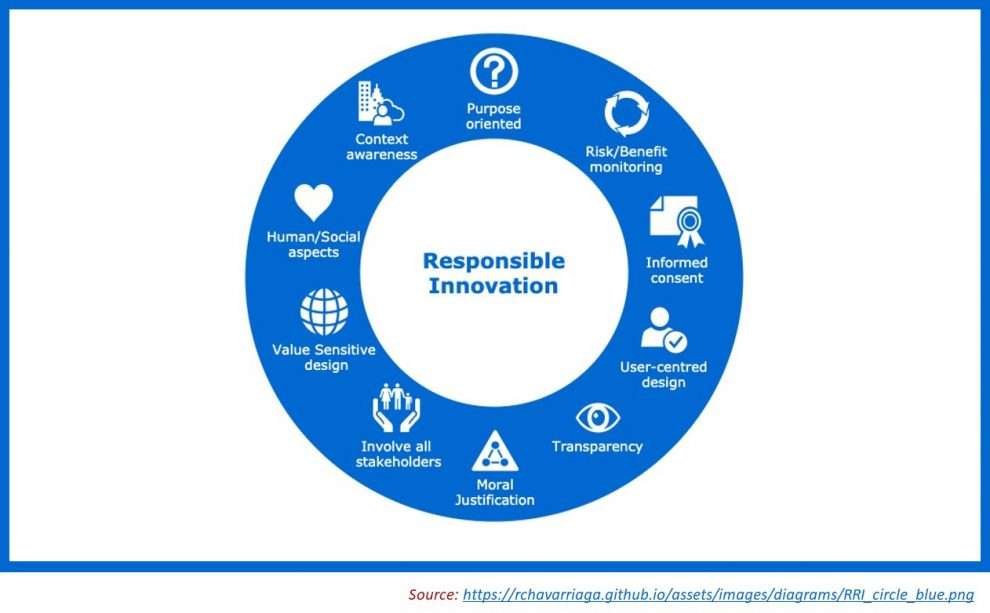
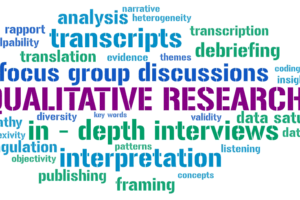
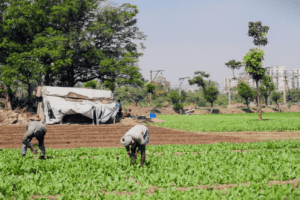

The concept of Responsible innovation is an important area while considering the differential impact of agricultural technologies in society. The concept looks beyond the traditional concern- scale/extent of adoption of technologies. Rather, the main concern here is value creation by the technology in the broader context. In this way, the concept promotes more discussions on the interaction and engagement of technology and society. The want of such debates is more crucial in the case of disruptive and smart farming technologies.
No doubt it is an entirely Extension subject article. But as you wrote, the young and brilliant extension scientists should study the impact of all these new AI based smart farming technology. But my innate fear based on past experience is that issue may be taken up by pseudo scientists and mafias, who will try to hijack the whole opinion making and decision making process. We have seen it in various spheres of public life. The country will suffer. How the small and marginal farmers will be benefited by this smart farming is to be seen.
I would like to appreciate the push given by the central government for this smart farming. Let us also move along with advanced countries, and not just followers or imitators.
” Your point is valid. My concern is that what happened to GM crops should not happen to smart farming, for which ex ante analysis is also needed, not post facto only.
Based on my understanding, the concept of RI is not properly utilised in our technology generation process, which can take care of many of the issues and concerns of the concerned stakeholders during implementation and also many bottlenecks can be effectively overcome.”
Thanks to Prof. R.M.Prasad for introducing us the concept of Responsible Innovation through this blog. Responsible innovations have to be evolved through responsible researchers and they need to be screened by responsible extension professionals. As the author rightly pointed out that it is necessary for the extension professionals to employ methodologies like ‘ex ante evaluations’ to screen the innovations in terms of equity and its impact on environment. This calls for improving the capacity of the extension professionals to acquire the skills to employ the relevant methods. I suggest our colleagues and students to go through a book “ Conducting On Farm Animal Research : Procedures & Economic Analysis by Pervaiz Amir and Hendrick C.Knipscheer (1989) published by Winrock International Institute for Agril Development and International Development Research Centre, which I found it very useful.
Another important concern raised by the author is the relevance and extent of use of the smart farming approach, to the small and marginal farmers. Globally not many researchers focus on issues related to the small holder families (Ceres 2030).
Ceres 2030 an international consortium reviewed more than on lakh articles published in the Nature Research Journals. One of the salient findings was that “Majority of the agricultural research publications were unable to provide solutions particularly to the challenges faced by the small holder farmers and their families”.
The whole thing revolves around ethics which need to be followed by various stakeholders involved in agricultural research.
Thanks to AESA for publishing this useful blog.